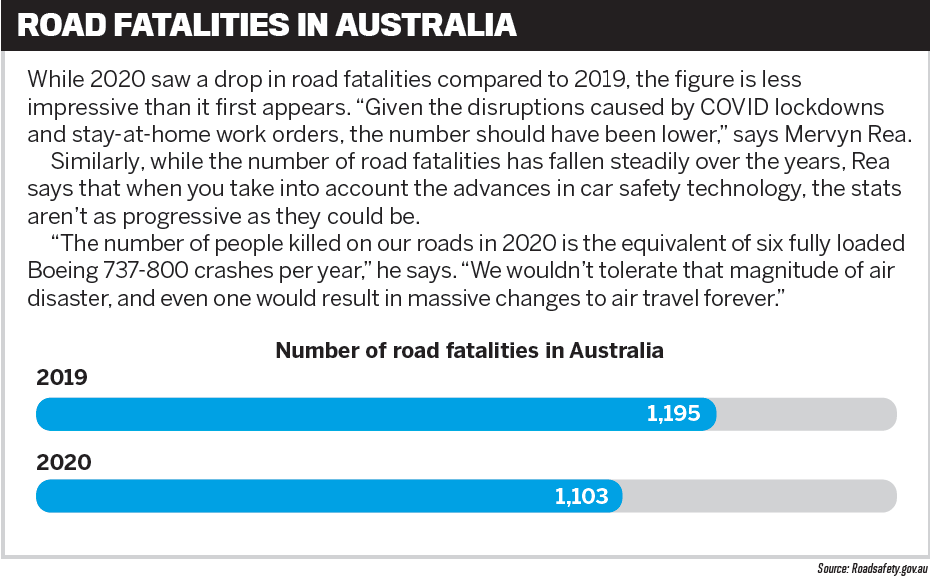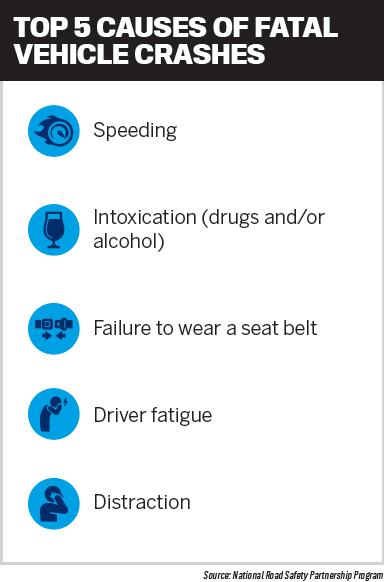

The adoption of driver safety technology has been slowly moving up a gear in recent years – and no wonder. Given their potential to save lives and prevent injury, digital safety tools seem like a no-brainer investment, especially for anyone in the transport industry.
In 2018, Australia’s National Transport Commission carried out a review into heavy vehicle telematics and other technology. The review made 16 key findings, including that forward collision warning systems can prevent between 21% and 44% of crashes and reduce the severity of injuries, fatigue and detection devices can help drivers avoid between 4% and 10% of fatal crashes, and lane departure warning systems can prevent between 4% and 15% of fatal crashes and reduce the severity of injuries.
Of course, it’s not just the heavy vehicle industry that stands to benefit; driver safety is a concern for any business that relies on drivers getting behind the wheel, whether they’re transport industry workers who drive as their primary vocation or, say, utility field workers or healthcare staff who drive as part of their job. And COVID-19, with its related restrictions and requirements, has done little to alleviate existing issues such as driver fatigue, which accounts for 20% to 30% of all fatal crashes on Australia’s roads.
“There are bound to be distractions such as disruptions in drivers’ personal lives – homeschooling, for instance – as well as work-related distractions like regular COVID testing,” says Mervyn Rea, head of Zurich Resilience Solutions for Australia and New Zealand. “Our work-life balance has been altered, which could also impact our circadian rhythms and thus increase our fatigue levels.”
The fact that many businesses use shared vehicles only creates an additional set of potential risks.
“If a fleet has a range of pool vehicles, the vehicle environment, ergonomics, controls, etc., are different from one make and model to another,” Rea says. “Therefore, jumping out of one vehicle type into another can increase unfamiliarity, and this could distract or confuse the driver.
“In addition, a previous driver of a vehicle may have left it unwittingly unfit for purpose for the next employee to drive – e.g. damage, low fluid levels, faulty lights/tyres, etc. We also come in different shapes and sizes, and how often do we really take the time to readjust seats and mirrors to suit us?”
 The true cost of driver safety
The true cost of driver safetyDespite the role driver safety tech can play in mitigating human error, is investment in these tools an obvious strategy for all businesses? And where there is still slow adoption, what can be done to reduce any concerns?
To start with the positive, one side effect of COVID-19 is that people of all ages are becoming more accepting of the role technology plays in our lives, Rea says.
“The COVID lockdowns and restrictions have taught us to be more tech-savvy with online banking, online shopping and QR codes to check in to locations we visit. And with more millennials in the workforce, there is likely to be a greater acceptance of smart, digitally biased solutions.”
Nonetheless, there is still some resistance to digital risk management – privacy is a major concern.
“There is significant pushback on this, with reluctance to use solutions such as apps on personal devices,” Rea says. “It’s a difficult debate to have. On one side, people are concerned if apps can track other sources of data from their devices, but on the other hand, we all have a responsibility towards safety.”
Another barrier to adopting technology, which is more easily addressed, is that digital solutions can appear expensive, particularly to small businesses. However, Rea says, insurers can play a role by talking through the true cost benefits of the investment.
“Take a digital solution such as a driver behaviour app – the cost of this is, on average, $120 per year, per employee,” he says. “Let’s assume a small business has 10 drivers. That total cost is $1,200 per year. If their motor insurance excess is $500, and if we also take into account other uninsured costs associated with road crashes – absenteeism, lost productivity, continuing to pay leasing costs when the vehicle is off the road for repairs – avoiding one crash each year will more than repay the cost of the app. In fact, by avoiding just one crash in this example, the technology may end up saving the business more money, keep its drivers safer and thus actually contribute to greater profits.”
When it comes to selecting this potentially cost-saving technology, businesses have an increasing array of options. These include everything from hard-wired telematic devices that monitor vehicle and driver behaviour through to phone apps that perform the same task and also include in-app driver coaching to improve behaviour over time.
“But there are also other in-vehicle camera and facial scanning solutions such as Seeing Machines that detect and alert the early symptoms of fatigue,” Rea says. “Then you have apps that help determine alertness, and wearable device technology like Preventure that can monitor and detect tasks that could give rise to musculoskeletal injury – e.g. getting in and out of a truck cab, load securement, etc.
“Other solutions, such as Safety Connect IT, use QR codes to ensure that operators of mobile plant complete ‘pre-start checks’ before unlocking the ignition, or that they’re adequately qualified, licensed and competent to use the item in the first place. There are even online and smart device solutions, such as Lightspace, to monitor toolbox safety briefing attendance and ensure those absent complete the briefing remotely at a later time.”
The benefits of digital risk management solutions include ease of use, portability (“having safety in your pocket, so to speak,” says Rea), data stored in the cloud that is easily analysed, and machine learning and artificial intelligence to provide instant insights or warnings. There’s also a very human consequence to investing in digital tools, even beyond getting drivers home safe to their families at the end of a shift.
“Employees often respond positively to a clearly demonstrated safety culture, and so absenteeism from work reduces, productivity increases, and staff turnover drops,” Rea says. “All of these benefits increase the resilience of a business and ensure they deliver their products or services to their customers on time, every time.”
 The role of the insurer
The role of the insurerRea does add a word of caution – there’s a danger that we could become too reliant on safety technology and not make our own informed risk management decisions. For a business, this can be perplexing. How do you know if you are too reliant or not reliant enough on technology? Given that digital tools significantly mitigate hazards but are not a 100% guarantee of safety, what other areas should you focus on?
This is where a good insurer and broker should come in with up-to-the-minute knowledge of the latest safety technology and an ability to look at the bigger picture. Rea says Zurich’s risk engineers are unique in the market, particularly when it comes to conducting semi-quantitative risk assessments of a business’s fleet operations and looking at exposures and the efficacy of management controls. They take into account technology and digital solutions that blend in with appropriate management policies and procedures.
“When we identify gaps, we make recommendations, and we keep abreast of digital and technology solutions,” Rea says. “We can provide advice on the best solutions and how to maximise return on investments made. We often support customers in pilot programs so they can determine the capabilities of these solutions for themselves.
“Finally, by helping the customer under-stand the total cost of crashes, we help demonstrate not only a quicker return on investment, but also how these investments can actually increase business resilience, performance and profits.”
